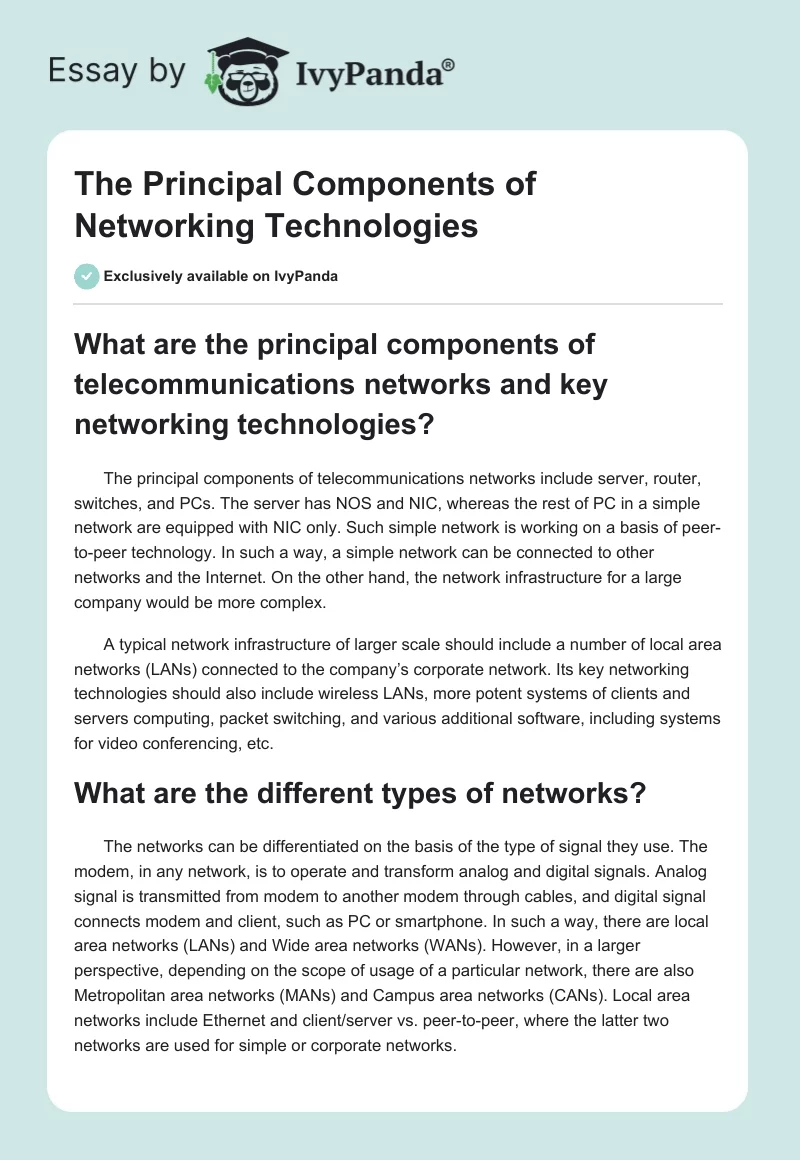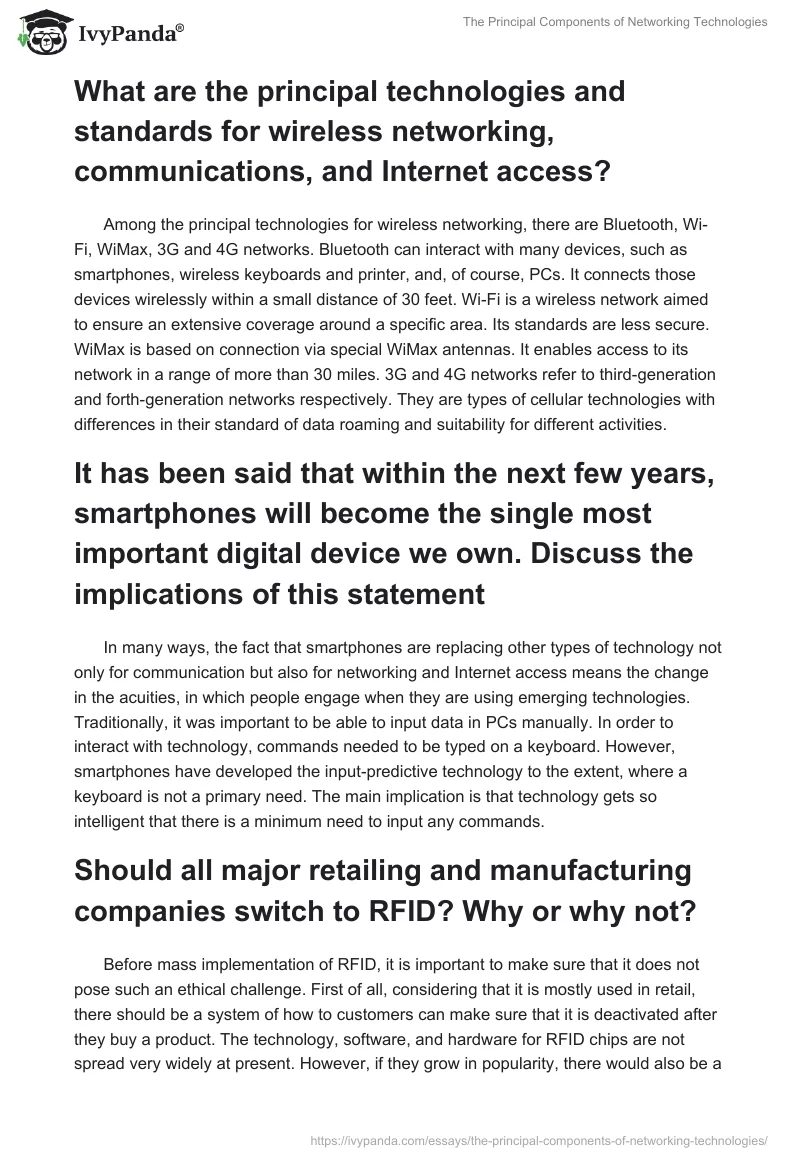What are the principal components of telecommunications networks and key networking technologies?
The principal components of telecommunications networks include server, router, switches, and PCs. The server has NOS and NIC, whereas the rest of PC in a simple network are equipped with NIC only. Such simple network is working on a basis of peer-to-peer technology. In such a way, a simple network can be connected to other networks and the Internet. On the other hand, the network infrastructure for a large company would be more complex.
A typical network infrastructure of larger scale should include a number of local area networks (LANs) connected to the company’s corporate network. Its key networking technologies should also include wireless LANs, more potent systems of clients and servers computing, packet switching, and various additional software, including systems for video conferencing, etc.
What are the different types of networks?
The networks can be differentiated on the basis of the type of signal they use. The modem, in any network, is to operate and transform analog and digital signals. Analog signal is transmitted from modem to another modem through cables, and digital signal connects modem and client, such as PC or smartphone. In such a way, there are local area networks (LANs) and Wide area networks (WANs). However, in a larger perspective, depending on the scope of usage of a particular network, there are also Metropolitan area networks (MANs) and Campus area networks (CANs). Local area networks include Ethernet and client/server vs. peer-to-peer, where the latter two networks are used for simple or corporate networks.
What are the principal technologies and standards for wireless networking, communications, and Internet access?
Among the principal technologies for wireless networking, there are Bluetooth, Wi-Fi, WiMax, 3G and 4G networks. Bluetooth can interact with many devices, such as smartphones, wireless keyboards and printer, and, of course, PCs. It connects those devices wirelessly within a small distance of 30 feet. Wi-Fi is a wireless network aimed to ensure an extensive coverage around a specific area. Its standards are less secure. WiMax is based on connection via special WiMax antennas. It enables access to its network in a range of more than 30 miles. 3G and 4G networks refer to third-generation and forth-generation networks respectively. They are types of cellular technologies with differences in their standard of data roaming and suitability for different activities.
It has been said that within the next few years, smartphones will become the single most important digital device we own. Discuss the implications of this statement
In many ways, the fact that smartphones are replacing other types of technology not only for communication but also for networking and Internet access means the change in the acuities, in which people engage when they are using emerging technologies. Traditionally, it was important to be able to input data in PCs manually. In order to interact with technology, commands needed to be typed on a keyboard. However, smartphones have developed the input-predictive technology to the extent, where a keyboard is not a primary need. The main implication is that technology gets so intelligent that there is a minimum need to input any commands.
Should all major retailing and manufacturing companies switch to RFID? Why or why not?
Before mass implementation of RFID, it is important to make sure that it does not pose such an ethical challenge. First of all, considering that it is mostly used in retail, there should be a system of how to customers can make sure that it is deactivated after they buy a product. The technology, software, and hardware for RFID chips are not spread very widely at present. However, if they grow in popularity, there would also be a danger of hacking them, alongside the ethical problem with tracking those chips, it can constitute a serious threat. Thus, despite their cost-effectiveness, RFID chips should only be in mass use, when they do not violate anyone’s freedom and are safe.
Compare Wi-Fi and high-speed cellular systems for accessing the Internet. What are the advantages and disadvantages of each?
Both Wi-Fi and high-speed cellular systems can occasionally share a disadvantage of slow data roaming. Although at present, this flow undergoes a process of elimination in 4G networks, it can still represent a problem for current users. On one hand, the major advantage of Wi-Fi compared to high-speed cellular systems is that it can cover larger areas, which is especially useful for public places, whereas 3G and 4G depend on the location. On the other hand, 3G and 4G networks have a major advantage because they are safer than WiFi because its individual use of 3G and 4G eschews the risks of WiFi, associated with the public access.


